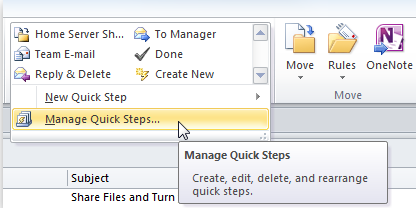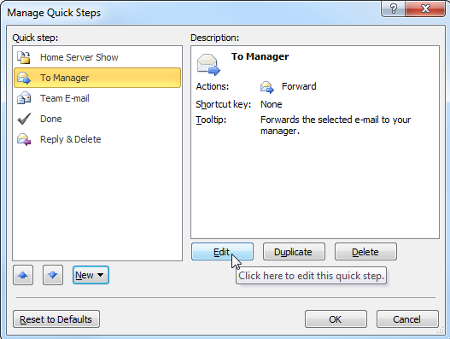Have any question?
Call (409) 861-4450
Call (409) 861-4450
 Sometimes the reason for not taking advantage of more complex features in programs is that they take multiple steps to complete. For those deterred from these features or functions, Microsoft Outlook has a Quick Steps feature that takes the pain out of multiple-step processes and reduces it to the click of a button.
Sometimes the reason for not taking advantage of more complex features in programs is that they take multiple steps to complete. For those deterred from these features or functions, Microsoft Outlook has a Quick Steps feature that takes the pain out of multiple-step processes and reduces it to the click of a button.
The primary advantage of using Quick Steps is that they are completely customizable, so you can create custom commands with a few simple steps. For instance, an Outlook Quick Step can make a custom Send and Archive shortcut, so it can store the message into a specific folder for later review. You can even make a Send and Delete action, so your inbox won’t be bogged down by unnecessary emails. Quick Steps can hold up to six of your most convenient functions in your Outlook ribbon, so make sure to pick the ones that enhance productivity the most.
Getting started with Quick Steps is simple enough to jump into right away. You can approach this goal three different ways:
If you’re more comfortable selecting the default Quick Steps, you can do that, too. Outlook has a whole slew of them ready to use at a moment’s notice, provided by the Microsoft Office support website:
Editing an Existing Quick Step
Go to Mail > Home > Quick Steps group. Click More at the side of the Quick Steps box, and click Manage Quick Steps.

In the Quick Step box, choose the Quick Step you want to edit. Click Edit.

Under Actions, change or add a new function to the Quick Step.
Creating a New Quick Step
By taking advantage of Quick Steps, you can turn your inbox into a productivity machine rather than an annoying time waster. For more tips on how to make the most of your Microsoft Office suite, give NetWorthy Systems a call at (409) 861-4450.
Get the Knowledge You Need to Make IT Decisions
Technology is constantly evolving, and keeping up can feel overwhelming. Whether you want to understand cybersecurity threats, explore automation, or learn how regulations like PCI DSS impact your business, we’ve made it easy to access clear, straightforward insights on key IT topics.
Learn more about what NetWorthy Systems can do for your business.
NetWorthy Systems
701 W. Division Ave Suite 100
Orange, Texas 77630